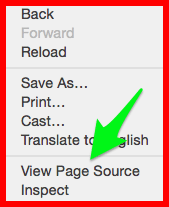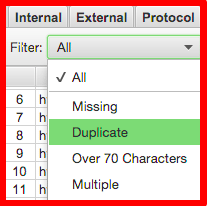Have you ever wondered what an H1 is and how many you should have on a page? If you have, you will love our digital marketing agency’s blog post on the seo H1 tags. I believe that H1s are underestimated when it comes to on-page search engine optimization.
Think of your webpage as being an outlined document. Remember when you had to outline a term paper in school? Outlining a webpage is a very similar approach. H1 tags aren’t a huge ranking factor, but they can be a key indicator of your page’s main topic and help with depending on your approach to using H1s on your site. This post will teach you everything you need to know about H1s, and how they can help with your on-page SEO.
Additionally, we’ll explore how to use a single H1 tag effectively, how to match it with your page’s title tag, and how to optimize for both search engines and user experience. By the end, you’ll know what H1 tags are, why they matter, and the step-by-step process to audit or fix them on your site.
What Is An H1 Tag?
Search engines read the source code of a website. Source code is that long and confusing page that pops up when the wifi or computer is not working correctly. It tells the search engine what is going on on the page and the location of every word. This is where website coders work to design the website, including colors and arrangement. Every element of the website lies within the code or what is also known as a style sheet. Within this page lies the article copy as well. Internet marketers that want to truly understand the path to great search engine optimization should become familiar with the source code page.
The SEO H1 tag is one of many indicators that the search engine must read.
So, what does H1 mean for a post? The H1 is an HTML (Hypertext Markup Language) heading tag that indicates the main topic on a web page. When visitors to your website see the H1s, it draws attention as it stands out the most on the page as it generally appears as a larger font size than normal text style and in bold. Therefore, it is appealing to the user, which is significant because user experience is an important element of SEO purpose.
An H1 in HTML looks like this:
<h1> H1 Tag Blog Post </h1>
Remember, you’ll typically only have one H1 tag per page—this is the primary heading that signals the page’s main focus to both search engines and users.

The H1 tag is the most important main heading on a page because it’s the highest heading level tag that shows what your page or blog post is about. As a result, search engines like Google give this tag more weight over other headings like H2s, so it helps improve your ranking when you use it correctly.
Beyond rankings, a well-crafted H1:
- Provides clear structure for screen readers, improving accessibility.
- Improves user experience by quickly confirming what your page covers.
- Helps with content organization so you can keep your writing focused on the main topic.
How Many H1s Should You Have On A Page?
We always have one H1 on a page and then typically use H2s and H3s for sub headings. It depends on the structure of your content and how you want to separate it out.
Although Google has stated it won’t penalize you if you have multiple H1s, best practice is still to keep one H1 per page for clarity, focus, and accessibility.
How To Write An H1 Tag For SEO
After conducting target keyword research and you decide on the keywords you’re going to use for on-page optimization on your page, make sure to include the primary target keyword in your H1 tag. For the majority of times, when writing blog posts, your SEO title tag will be the same as your H1 header.
Related: This Is How You Write a Compelling, Attention-Grabbing Title Tag
It is good practice to include your keywords at the start of both your SEO title and H1. With that being said, only do this when it makes sense to do so.
Tips for Creating Great H1 Tags
- Have one H1 tag per page
- The H1 should describe the topic of your page
- Use H1’s that provide a good user experience and match users intent
- Don’t target the same keywords in different posts
- Use a focused long-tail keyword in your H1
- Keep your H1 concise—under 60 characters—so it won’t get truncated in SERPs if used as a title
Matching H1 Tag & Title Tag
Google recommends that your H1 tag closely match your title tag so that users have a consistent experience from the search result to your actual page. If they’re drastically different, visitors may get confused. In many cases, your CMS automatically sets your page title as both the H1 and title tag. However, you can vary it slightly to include additional context or branding as long as both are aligned on the main topic.
Ideal H1 Length & Keyword Placement
As a best practice, keep your H1 around 50–60 characters. This ensures your heading is scannable, user-friendly, and not too wordy. Placing your primary keyword in the beginning of your H1 can provide a subtle SEO boost, but only if it reads naturally. Always prioritize user intent and clarity.
WordPress
Most WordPress themes automatically assign your blog post or page title as the H1. If you need to manually add or edit an H1, simply highlight the text block, select “Heading,” and choose “H1.”
Wix
Wix auto-generates an H1 for your post title. However, you can customize headings in the Editor by clicking on the text, selecting “Edit Text,” and assigning “Heading 1.”
Squarespace
Squarespace also typically assigns blog titles as H1. For any other text, highlight it, click the “Formatting” button, and choose “Heading 1.”
Through the Page Source
Open up a page on your website and right click on the page and click “View Page Source.”

Once you have followed the above instructions, you will see the page source code.
To search for the H1 tag, press “CTRL” (or command if on a Mac) and “F” to open the search feature on your browser and type “</h1>.”

Screaming Frog
If you want to do a full analysis of all the H1 tags on your website, you can use Screaming Frog. Screaming Frog will do an analysis of up to 500 pages for free, or you can crawl a much larger site if you have a paid account. Screaming Frog will provide a list of all the H1 tags on our site.
Analyzing H1 Tags With Screaming Frog
Follow the following process using Screaming Frog for a complete H1 audit.
- Download Screaming Frog to your computer from this website:https://www.screamingfrog.co.uk/.
- Click “SEO Spider Tool” -> then click “Download.”
- You do not need to purchase a license to use the software. However, if your website has more than 500 pages, you should then purchase a license so you can crawl your entire website.
- Once you’ve downloaded Screaming Frog successfully, open it.
- Once opened, add your domain to the section that says “Enter url to spider.”
- Click Start, and wait for the crawl to complete. The crawl process could take a couple of minutes or a few hours, depending on the size of your site.
- Then, click H1 in the menu bar.
Related: What is Direct Traffic in Google Analytics?


This is where you will see the full list of H1s on your website. Download the complete list of H1s by selecting “all” and export the list. If you notice that you are missing H1 tags for a page or you have duplicate H1s, you need to fix these.
How to Find Missing H1s With Screaming Frog
Click the filter menu and from the drop-down select “Missing.”

Here you will see a list of all the pages on your site that do not have an H1 tag. You should then create an H1 for each of these pages. Create a list of the missing H1 tags and click “Export.”
How to Find Duplicate H1s With Screaming Frog
Filter all the duplicate H1s by selecting “duplicate” on the filter menu.

Create a list of the duplicate H1 tags and click “Export” and save the list for future reference.
You should now have three files including duplicate, missing and a complete list of all the H1 tags.
Using Other SEO Audit Tools
Besides Screaming Frog, tools like SEMrush Site Audit, Moz On-Demand Crawl, or Ahrefs Site Audit can also detect missing, empty, or duplicate H1s across your site. You can often schedule recurring audits to catch new issues quickly—helpful if your site updates frequently.
How To Create New H1s
Your task now is to create new H1 tags for each of the categories. Start with the missing ones followed by duplicates.
If your website is extremely large with thousands of pages, start working on the highest-priority pages.
To save some time, use a generator or a script to create H1 tags. However, it is important to update all of your H1s to align with the rules that I provided above. By following the above steps expect to see an improvement in your traffic rankings and your overall site performance.
HTML has six different heading tags including an H1, H2, H3, H4, H5 and H6. The H1 is considered the most important tag, while the H6 tag is the least important.
But to the point, yes, these header tags are important but not as important to the search engines as your H1 tag. In contrast to the H1 tag, you may have multiple H2, H3, H4, H5, and H6 tags as subheadings on a page.
It’s recommended to only have one H1 tag and have your sub headers labeled as H2, H3, etc.
Related: What is Meta Data? And How Do You Use It to Benefit Your Brand?
For instance, to make your header content more readable, use H2s to divide it up. This helps break up the text on the page and help users pick out the sections they want to read. If you are writing a long piece of content, you could use a H3 tag also. In general, we rarely use H4s as it ends up with too many levels on the page.
An H2 tag is the next most important html heading on your page after an H1, so make sure you consider these in your content. Typically, we try to have secondary keywords in H2 tags so that you have a chance to rank for those variations as well.
Accessibility & Screen Readers: Why One Clear H1 Matters
For users who rely on assistive technologies like screen readers, a single H1 tag helps orient them quickly to the main topic of the page. Screen readers often navigate content by reading out headings, so if your H1 is missing or unclear—or if there are multiple, conflicting H1s—this can cause confusion and a poor user experience. Ensuring you have a logical heading hierarchy (one H1, multiple H2s, H3s, etc.) benefits everyone, including users with visual impairments and search engine crawlers.
Wrapping Up
H1 tags are one element of optimizing your website but, if you get them wrong, can be damaging to your entire site.
We recommend having one H1 per page, using long-tailed keywords, providing a good user experience by matching user’s intent, and finally, not using the same H1 header tag on other pages of your site.
Additionally, use H2s and H3s to help make your content and keyword phrases more readable. For more information on header tags and how we can help, contact the SEO experts at Power Digital Marketing today for a complete H1 audit.
By implementing these best practices—keeping your H1 concise, matching it closely to your title tag, auditing regularly with tools like Screaming Frog or SEMrush, and remembering accessibility—you’ll create pages that resonate with both search engines and users. Now that you have answered the question “what are h1 tags?”, it’s time to elevate your on-page SEO and enjoy the rankings boost!













